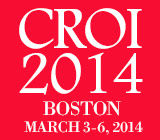 Just six weeks of Gilead Sciences’ hotly anticipated combination pill of ledipasvir and Sovaldi (sofosbuvir), given with or without GS-9669 or GS-9451, cured 95 to 100 percent of people with genotype 1 of hepatitis C virus (HCV) in a small pilot study, MedPage Today reports. Findings from the SYNERGY study were presented at the Conference on Retroviruses and Opportunistic Infections (CROI) in Boston.
Just six weeks of Gilead Sciences’ hotly anticipated combination pill of ledipasvir and Sovaldi (sofosbuvir), given with or without GS-9669 or GS-9451, cured 95 to 100 percent of people with genotype 1 of hepatitis C virus (HCV) in a small pilot study, MedPage Today reports. Findings from the SYNERGY study were presented at the Conference on Retroviruses and Opportunistic Infections (CROI) in Boston.
By presenting these findings, Gilead has raised the stakes yet again in the fiercely competitive race to bring highly effective, easily tolerated hep C regimens to market, especially considering the fact that the company studied these drug combinations in a difficult-to-treat population. Current preferred therapeutic options entail 12 to 24 weeks of treatment for most people. Other medication combinations in the pipeline have typically been edging treatment protocols toward 12 or sometimes eight weeks.
The study was divided into three arms of 20 treatment-naive participants with genotype 1 of hep C. In the first arm, participants with all stages of liver fibrosis received 12 weeks of therapy with the coformulated pill of the NS5A inhibitor ledipasvir and the nucleotide analog NS5B polymerase inhibitor Sovaldi. The second and third arms included participants without cirrhosis who received six weeks of treatment with the combination pill plus the non-nucleoside NS5B site 2 polymerase inhibitor GS-9669 in the second arm and the NS3 protease inhibitor GS-9451 in the third arm.
Just one participant, in the arm that included GS-9669, did not achieve a sustained virologic response 12 weeks after completing therapy (SVR12, considered a cure). Consequently the respective cure rates in arms one, two and three were 100 percent, 95 percent and 100 percent.
The patient population was traditionally difficult to treat: Most of them had genotype 1a and high hep C viral loads, and about 25 to 30 percent of them had advanced liver disease. About 80 percent were African Americans, who historically have not responded as well to treatment.
To read the MedPage Today story, click here.
To read the conference poster, click here.
Advertisement
Advertisement
Advertisement






Comments
Comments